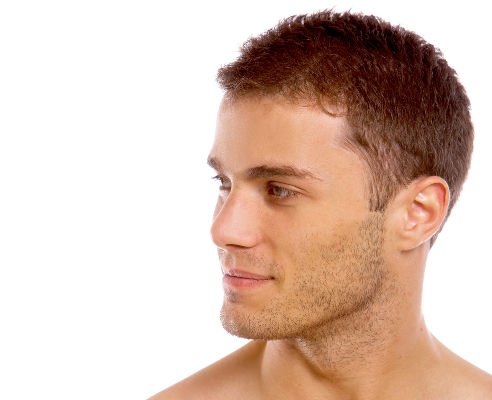The informative consultation for hair transplants is highly important. This is where patients find out if they are suitable candidates for the technique and the results they can expect, depending on their baldness type, age and donor site hair quality.
The surgeon analyses certain aspects with the patient during the consultation for hair transplant:
Using the patient's case history with the Norwood scale for men and the Ludwig scale for women, the surgeon determines the degree of alopecia.
The surgeon establishes the patient hair calibre on the donor site, density of the hair follicles and the number of hairs that make up each follicular unit.
Low densities or very fine hair will obtain poor results in the hair graft, and are therefore contraindicated. In general, the donor site is suitable for transplant when it has more than 70 follicular units per square centimetre (70 fu/cm2) and the hair calibre is over 80 microns.

The surgeon assesses the state of the donor and recipient sites in the first consultation
It is essential for the alopecia to be stabilised, either because the patient has reached a mature age or because the tendency to lose hair is being treated with medication such as finasteride or minoxidil.
The patient should be informed that the alopecia will continue progressing if its evolution is not stabilised. Therefore, severe alopecia in young patients is usually cause for contraindication, since the tendency to keep losing hair is intense and the grafted area, over time, could be surrounded by an unsightly bald patch. If the evolution of the alopecia is not controlled, hair grafting can be contraindicated.
In the case of women, grafting is considered to have positive results when the patient is in stages II and III of the Ludwig scale, providing she has a good donor site.
The surgeon will explain what the procedures consists of to the patient and the expected results. The physician will show the patient before and after photographs of a hair graft, which will help in seeing the type of correction they can achieve.
The patient should be shown photographs of cases similar to their own, where they can see the development of the result, from the day of the surgery up to 6 and 12 months later, when the hair has reached a certain length and the maximum correction rate expected.

Before and after the hair graft
If the procedure is performed with the FUT technique, or strip harvesting, the patient will be informed of the type of scar that will be concealed in the hair. If the patient wants to wear their hair short or shaved, the technique of choice for donor hair harvesting is FUE, since punch extraction leaves almost imperceptible marks.
The patient will be tested to ascertain their full blood count and coagulation level. The patient should refrain from taking anticoagulants in the days leading up to the surgery. They should obtain their physician's permission to temporarily withdraw the medication. The patient should let the hair in the donor site grow so it can camouflage the strip scar in the case of undergoing the FUT technique, or the extraction area for the FUE technique.
Hair on the donor site should measure at least 2 cm. On the day of the surgery, the patient should wash their hair with an antiseptic shampoo.

The patient will be informed of the expected outcome during the first consultation for a hair graft
Following the micrograft hair replacement, it is essential to maintain viability of the grafts until they have taken root in their new location. Therefore, over the 24 hours following surgery, the area should be periodically moistened with saline solution, every 2 or 3 hours.
It is of vital importance for the transplant area not to be subjected to rubbing or friction. Exercise or intense movement should be avoided for the first week.
The patient can wet their scalp on the second and third day after surgery, letting the water fall gently from the shower onto their head, but without rubbing or scratching the scalp.
On the fourth day, the patient can apply a neutral soap, similar to those used for infants. They should lather with their fingertips without rubbing, rinse gently and pat dry.
A week later, they can shampoo almost normally, but still using their fingertips. This shampooing will help to dislodge the small scabs that form on each graft.
After approximately 10 days, the patient can wash their hair as usual and go back to normal daily life, exercise, etc.
The hair inside each transplanted follicle enters the telogen stage and is shed. The new hairs start to form in each follicle a few weeks after surgery and will be visible 3 or 4 months later. As the grafted hair gets longer, coverage increases and each hair will gradually thicken. The cosmetic result will improve over time. The final result can be assessed 12 months after the graft.
Do you have any further questions about hair grafts? Request a free informative consultation now with one of our expert surgeons from the IML Hair Transplant Unit.